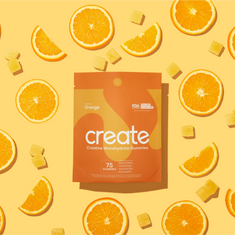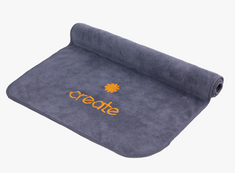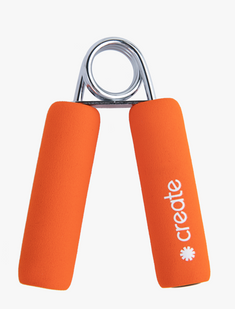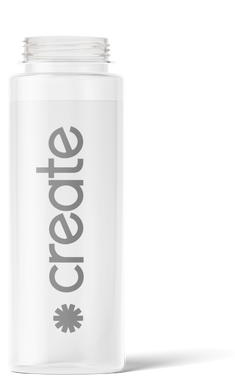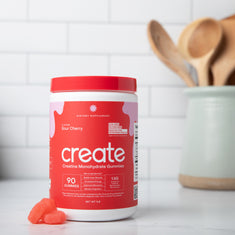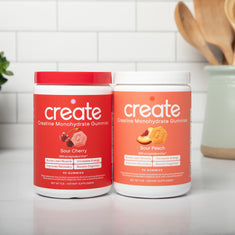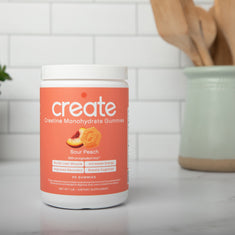Creatine Monohydrate Absorption Rate: Unleashing Athletic Power
Creatine monohydrate is an important supplement for improving athletic performance, especially in sports that need short bursts of strong energy, such as weightlifting and running. Its relevance stems from its capacity to quickly replace ATP, the body's basic energy currency, resulting in improved power and stamina. Understanding absorption rates, on the other hand, is critical for realizing its full potential. Creatine comes in a variety of forms, including creatine gummies. Faster-absorbing forms may produce faster outcomes, while slower-absorbing forms may provide longer-term advantages. Thus, choosing the proper form and timing of creatine consumption is critical for optimizing its impact on athletic performance.
The Science Behind Creatine Monohydrate Absorption
Monitoring creatine monohydrate absorption is critical since it impacts its bioavailability and efficacy in improving athletic performance. Athletes can leverage the full potential of creatine for greater strength and power during training by optimizing absorption mechanisms.
Creatine Uptake By Skeletal Muscles
Creatine enters skeletal muscles predominantly through a specialized transporter known as "CRT." This transporter aggressively transfers creatine into muscle cells against the concentration gradient, which speeds up the process. In order to ensure that muscles have enough creatine for energy production during high-intensity exercises, factors like insulin and muscle contraction control creatine uptake.
Absorption Pathways In The Body
Following consumption, creatine monohydrate gets assimilated through the gastrointestinal tract. It enters the bloodstream and travels to the muscles. Digestion, transit via blood vessels, and absorption by muscle cells are all important steps. Understanding these routes is critical for boosting creatine absorption and its efficacy in improving athletic performance.
Creatine Monohydrate Bioavailability
The amount of creatine monohydrate that the body can absorb and use effectively is referred to as its bioavailability. Bioavailability is influenced by factors such as formulation, timing, and concurrent nutrient intake. Higher bioavailability results in faster and more effective creatine absorption, maximizing its capacity to improve athletic performance.
Factors Affecting Absorption Rate
The way your body absorbs creatine monohydrate depends on things like the type of gummy you use, the food you eat at the same time, and your metabolism and digestive health. These variables can have an effect on the pace and efficiency of creatine absorption in the body.
Timing Of Creatine Consumption
The timing of creatine absorption is critical. According to research, ingesting creatine before and after exercise can improve its effectiveness. Pre-exercise consumption may boost performance, whereas post-exercise consumption promotes recuperation and muscular uptake. Consider a combination of before- and post-workout creatine supplements to maximize absorption.
Interaction With Other Substances
Certain foods and drugs can affect the absorption of creatine. Carbohydrates can raise insulin levels, facilitating creatine absorption, whereas coffee can limit its efficiency. Consider taking creatine from a carbohydrate source and avoiding excessive caffeine use while supplementing to improve athletic performance.
Exercise And Training Impact
The type and intensity of exercise have an effect on creatine absorption. Resistance exercise, a high-intensity, short-duration activity, has a higher creatine absorption potential. According to research, strength- and power-focused training regimens improve creatine absorption by increasing muscular demand for energy, hence increasing the supplement's effectiveness in promoting performance and muscle growth.
Creatine Formulations And Solubility
Creatine absorption rates can vary depending on the formulation. Creatine monohydrate is a frequently utilized and well-absorbed type of creatine. While creatine gummies are convenient, their solubility might vary, potentially affecting absorption. For optimum absorption, choose creatine gummies that contain a highly soluble creatine type, such as monohydrate.
Methods To Enhance Creatine Monohydrate Absorption Rate
Maximizing creatine monohydrate absorption is critical for realizing the full benefits of creatine monohydrate in improving sports performance and muscular building. Exploring strategies to improve absorption rates seeks to ensure that the body can efficiently absorb this supplement, allowing athletes to get the full benefits it provides during their training and exercise regimens.
Combining With Carbohydrates Or Proteins
According to research, mixing creatine and carbs can raise insulin levels, boosting creatine uptake by muscle cells. Using creatine with proteins may also improve absorption, potentially aiding muscle protein synthesis. Because of these synergistic effects, combining creatine with carbs or proteins is a good way to increase its efficiency in endurance training and muscle growth.
Creatine Loading Strategies
Creatine loading is a short period of higher-dose supplementation that saturates muscle creatine stores quickly. The loading phase can improve creatine absorption and is usually done with 20 grams of creatine per day for 5-7 days, followed by a maintenance dose of 3-5 grams per day. This method effectively raises muscle creatine content, potentially leading to faster performance gains.
Pre-Workout Creatine Supplementation
Taking creatine as a pre-workout supplement allows you to time its absorption strategically. Creatine supplementation before exercise may improve its availability during workouts when energy needs are greatest, potentially improving strength, power, and total exercise performance. This period corresponds to the enhanced responsiveness of muscles to creatine during physical activity.
Creatine Monohydrate Absorption In Different Populations
Recent research has suggested that creatine absorption is often more efficient in athletes and high-intensity trainers due to increased muscular demand. This means that optimizing creatine supplementation may necessitate careful attention to timing and dose, as well as the type of creatine ingested. For instance, studies have shown that when taken prior to exercise, the absorption rate of creatine monohydrate is generally higher compared to post-workout intake. In addition, taking larger amounts of creatine (20 grams per day) has been shown to be more effective at raising muscle levels than lower doses (3-5 grams per day).
Older people typically have lower basal metabolic rates, so they may need to adjust their creatine doses accordingly. Additionally, age-related changes in muscle composition can affect the absorption rate of creatine monohydrate. Therefore, it is important for older individuals to use lower doses and longer loading times (5-7 days) when supplementing with creatine monohydrate. Furthermore, physical activity such as resistance training has been associated with improved absorption of creatine monohydrate in older adults.
Take Creatine Monohydrate Gummies For Better Absorption
Creatine monohydrate gummies may be a better option for older individuals to get their daily creatine dose, as the gummies are easier to swallow and have been associated with improved absorption of creatine. For those looking to buy creatine monohydrate, our product uses the highest quality ingredients and is free of any fillers or binders. With proper dosage and loading times, it can help achieve optimal levels of muscle building in older adults. And since it’s in gummy form, there’s no need to mix, shake or measure. Simply consume a few of these delectable treats on a daily basis to achieve the desired results.

